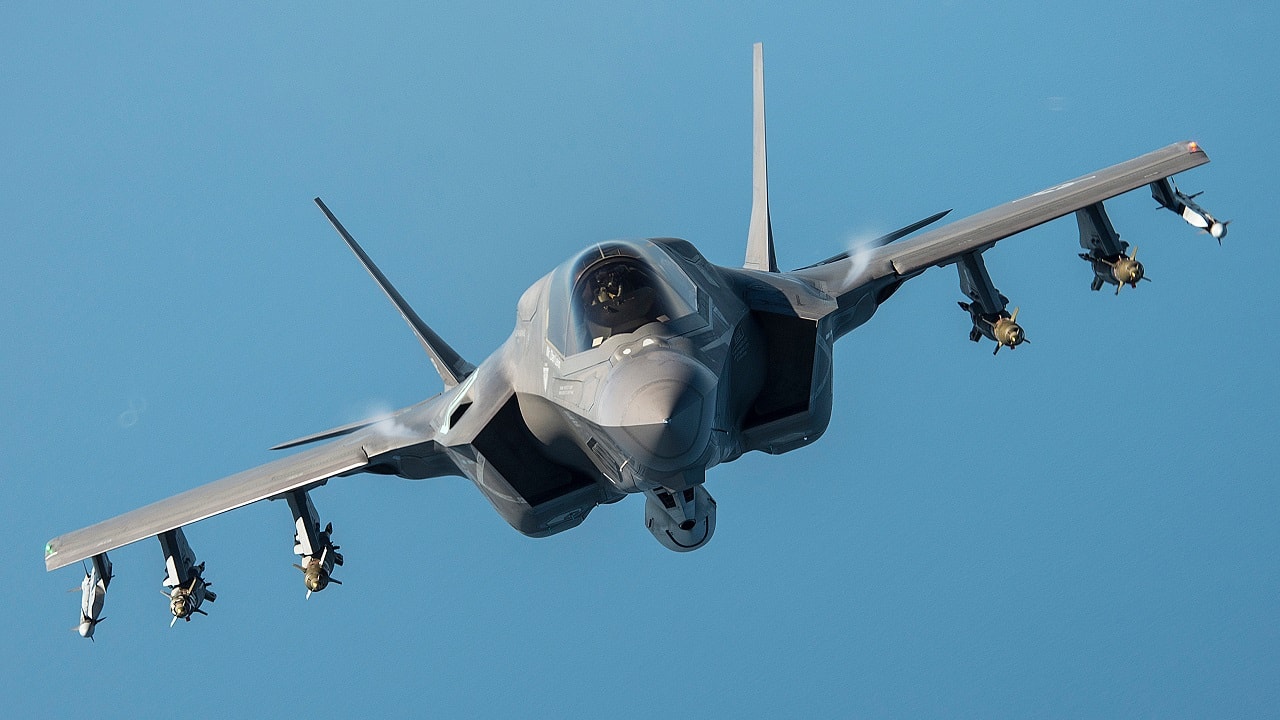The U.S. Air Force is moving forward with the development of a new weapon that could make a difference in the ground attack missions of the future.
The Stand-In Attack Weapon (SIAW)
Last week, the Air Force awarded Lockheed Martin, Northrop Grumman, and L3 Harris Technologies a $6 million ($3 million each) three-month contract to work on the first phase of the SIAW program, Defense News reported.
The main objective of the SIAW program is to provide the Air Force with a munition capable of penetrating adversary anti-access/area denial (A2/AD) defenses. Such defenses are particularly prevalent in the Indo-Pacific, and particularly in the South China Sea, where the Chinese military has created and fortified small islands with anti-aircraft and anti-ship weapon systems in an attempt to negate the advantages of U.S. aircraft carriers.
As opposed to standoff munitions, stand-in weapons can’t be deployed from great distances. As a result, the F-35 Lighting II would have to operate within an adversary’s anti-aircraft umbrella. But that doesn’t mean that the SIAW won’t improve the Suppression Enemy Air Defenses (SEAD) and Destruction Enemy Air Defense (DEAD) capabilities of the F-35 Lighting II. The weapon promises fast target acquisition that could allow the stealth aircraft to deploy the missile and scoot.
Coupled with the F-35 Lighting II’s stealth characteristics, the SIAW could prove a very effective weapon indeed.
“As a missile leader, Northrop Grumman has a proven history of developing and rapidly delivering long range, highly capable and survivable weapons. We continue to advance our offering to stay ahead of threats and help ensure our mission-enabling capability will be technologically mature, tested and affordable,” Mary Petryszyn, corporate vice president and president, Northrop Grumman Defense Systems, said in a press release.
The Air Force’s 2023 budget has requested $78 million for the purchase of 42 SIAWs.
The F-35 Lightning II will also be able to carry and deploy standoff munitions, which are designed to be launched outside an adversary’s anti-aircraft umbrella and thus safeguard the aircraft; the Russian Aerospace Forces have been using standoff munitions in Ukraine quite a lot because of that reason.
F-35 Lighting II: The Quarterback of the Skies
The F-35 Lightning II is a fifth-generation multirole stealth fighter jet and one of the most advanced aircraft to fly.
The F-35 Lighting II specializes in six different mission sets: Strategic Attack, Close Air Support, Air Superiority, Electronic Warfare, Intelligence, Surveillance, and Reconnaissance (ISR), and Suppression Enemy Air Defenses (SEAD) and Destruction Enemy Air Defense (DEAD).
The capability that truly differentiates the F-35 Lighting II from other aircraft, including its stealth sibling F-22 Raptor, is its sensory fusion abilities that allow the stealth fighter jet to be a true quarterback of the skies. An F-35 Lighting II can gather intel from across the battlefield and feed to different ground, air, and naval assets in the region, enabling the any-sensor/any-shooter concept the U.S. military is going after.
In total, the Pentagon wants to purchase around 2,500 F-35 stealth fighter jets of all three types. The F-35A is the conventional take-off variant; the F-35B is the short take-off, vertical landing (STOVL) version; and the F-35C is the aircraft carrier variant. The Air Force wants around 1,700 F-35As, the Marine Corps about 350 F-35Bs and 70 F-35Cs, and the Navy 270 F-35Cs.
1945’s New Defense and National Security Columnist, Stavros Atlamazoglou is a seasoned defense journalist specializing in special operations, a Hellenic Army veteran (national service with the 575th Marine Battalion and Army HQ), and a Johns Hopkins University graduate. His work has been featured in Business Insider, Sandboxx, and SOFREP.

